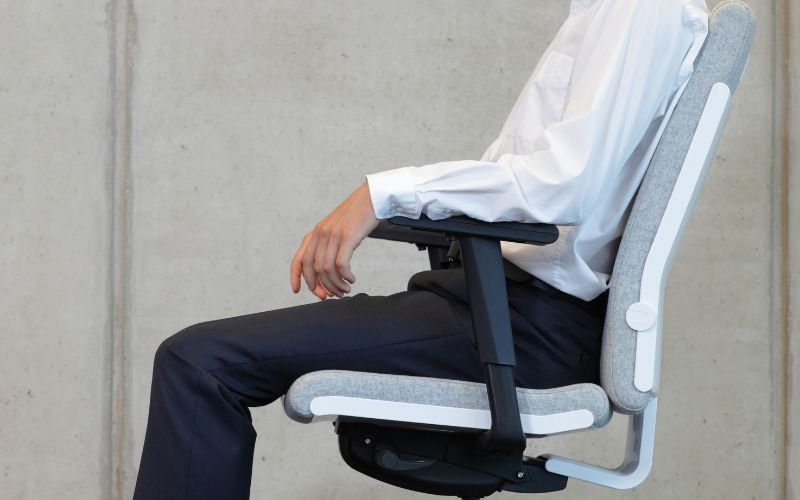That’s why we have implemented ergonomic principles in our workplace to reduce workplace fatigue and improve the overall health and well-being of our employees.
What are ergonomic principles?
Ergonomic principles involve designing a workspace that fits the worker to reduce the risk of injury and increase productivity. It is the science of designing equipment, tools, and processes that are comfortable, safe, and efficient to use. Ergonomic principles aim to reduce the risk of musculoskeletal disorders (MSDs) such as back pain, carpal tunnel syndrome, and neck pain caused by poor posture, repetitive motion, and awkward positions.
Here are some of the ergonomic principles we have implemented at our workplace to reduce workplace fatigue:
Proper Lighting
Proper lighting is essential to reduce eye strain, headaches, and neck pain. We ensure that our workplace is adequately lit with natural light and supplementary lighting, such as desk lamps, to prevent eye strain and improve visibility.
Comfortable Seating
Sitting for prolonged periods can lead to back pain, neck pain, and poor posture. To reduce workplace fatigue, we provide our employees with ergonomic chairs that support the natural curves of the spine, adjust in height and tilt, and have armrests to reduce the strain on the shoulders.
Adjustable Workstations
Adjustable workstations allow employees to work in a comfortable position, whether standing or sitting. We have implemented height-adjustable desks that allow employees to alternate between standing and sitting, reducing the risk of back pain and increasing productivity.
Proper Keyboard and Mouse Placement
Repetitive motion from typing and using the mouse can lead to carpal tunnel syndrome and other MSDs. We ensure that our employees’ keyboards and mouse are positioned at a comfortable distance from their bodies, with their wrists in a neutral position to reduce the strain on their wrists.
Regular Breaks
Taking regular breaks is essential to reduce workplace fatigue and increase productivity. We encourage our employees to take short breaks every hour to stretch, walk around, and rest their eyes to reduce eye strain.
Proper Posture
Maintaining proper posture is essential to reduce the risk of back pain and neck pain. We provide our employees with ergonomic chairs that support their natural posture, and we encourage them to maintain proper posture while working.
Why is reducing workplace fatigue important?
Reducing workplace fatigue is essential because prolonged sitting, repetitive motions, and poor posture can lead to musculoskeletal disorders (MSDs) that can affect the employee’s overall health and well-being. MSDs are a leading cause of disability and lost productivity in the workplace, costing companies billions of dollars each year.
In addition to physical health, reducing workplace fatigue can also have a positive impact on the employee’s mental health. A comfortable and ergonomic workspace can reduce stress, increase job satisfaction, and improve overall well-being.
By implementing ergonomic principles, companies can reduce the risk of MSDs, increase productivity, and improve employee satisfaction, ultimately leading to a healthier and more productive workforce.
How can companies implement ergonomic principles in the workplace?
Implementing ergonomic principles in the workplace involves identifying the hazards that lead to MSDs and designing solutions to eliminate or reduce those hazards. Here are some steps companies can take to implement ergonomic principles in the workplace:
Conduct a Workplace Ergonomic Assessment
Conducting a workplace ergonomic assessment involves identifying the hazards that lead to MSDs, such as repetitive motions, prolonged sitting, and awkward positions. Once the hazards are identified, companies can design solutions to eliminate or reduce those hazards.
Provide Training and Education
Providing training and education to employees on proper ergonomics can help prevent MSDs. Employees should be trained on how to use ergonomic equipment properly, how to maintain proper posture, and how to take regular breaks to prevent workplace fatigue.
Invest in Ergonomic Equipment
Investing in ergonomic equipment, such as adjustable workstations, ergonomic chairs, and ergonomic keyboards, can significantly reduce the risk of MSDs. Companies should choose equipment that is adjustable, comfortable, and designed to fit the worker.
Encourage Regular Breaks
Encouraging regular breaks can reduce workplace fatigue and increase productivity. Employees should be encouraged to take short breaks every hour to stretch, walk around, and rest their eyes.
Conduct Regular Workplace Ergonomic Assessments
Regular workplace ergonomic assessments should be conducted to ensure that the ergonomic principles implemented in the workplace are effective and to identify any new hazards that may have emerged.
FAQ
Implementing ergonomic principles in the workplace can lead to a healthier and more productive workforce. By reducing the risk of MSDs, companies can decrease the number of workplace injuries, improve employee satisfaction, and increase productivity.
An ergonomic assessment is an evaluation of the workplace to identify hazards that lead to MSDs. It is essential because it helps companies design solutions to eliminate or reduce those hazards, ultimately reducing the risk of workplace injuries and increasing productivity.
Common ergonomic hazards in the workplace include prolonged sitting, repetitive motions, awkward positions, and excessive force.
Employees can prevent workplace fatigue by maintaining proper posture, taking regular breaks, and using ergonomic equipment.
Examples of ergonomic equipment include adjustable workstations, ergonomic chairs, and ergonomic keyboards.
Not implementing ergonomic principles in the workplace can lead to musculoskeletal disorders (MSDs), workplace injuries, lost productivity, and decreased employee satisfaction.










